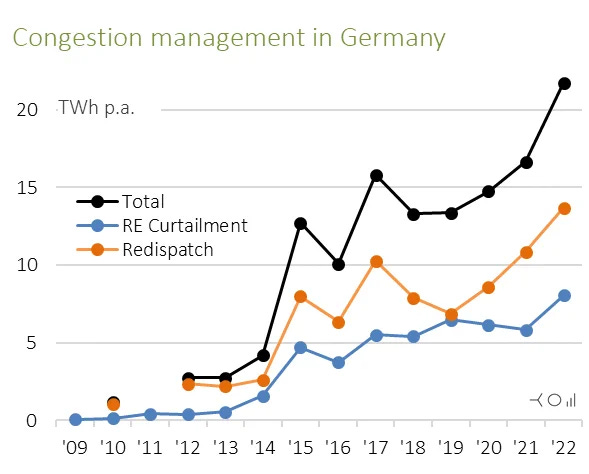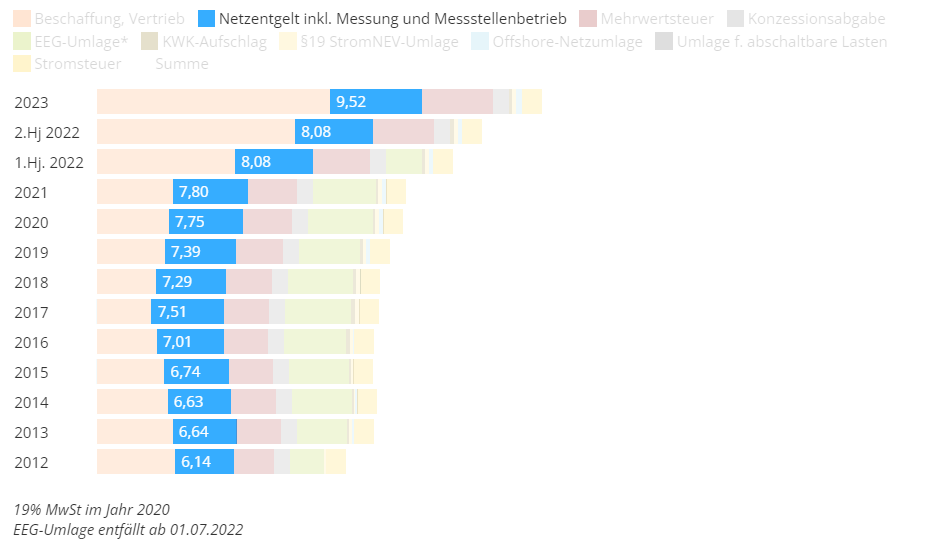Grid Upgrade - Part 2: what lies ahead
Slow grid expansion, increased congestion, and inflated grid fees.
This post marks the second installment in a two-part series exploring the electricity grid. In this segment, we will delve into the prospects that lie ahead. The first part can be found here.
Following our exploration of the reasons for upgrading the electricity grid, we will now discuss what lies ahead of us. In a nutshell, it is likely that the grid will struggle to keep pace as it should, leading to a high degree of congestion. Concurrently, these upgrades may come at a cost, potentially leading to price increases in our utility bills.
Let’s explore.
Grid upgrade does not keep pace with other technologies
Several emerging technologies are currently experiencing rapid deployment, with solar panels, heat pumps, and electric vehicles standing out prominently in this trend. What unites these technologies is their suitability for both individual and mass production, enabling simultaneous adoption by consumers. This potential for widespread adoption could significantly accelerate deployment rates compared to centrally planned grid systems. Furthermore, these products often benefit from government incentives and do not require complex permitting processes, further facilitating their integration into the market.
Conversely, investments in the grid are marked by a sluggish pace, often entailing a substantial amount of central planning, permitting, and procedural hurdles. According to findings by the IEA, the development of overhead transmission line projects in the United States and Europe, spanning the years from 2010 to 2021, averaged a decade in duration. Intriguingly, the installation of underground and subsea cables tends to progress at a somewhat quicker pace.

Getting even slower due to local opposition
Project timelines can significantly derail when they encounter local opposition, often attributed to the so-called NIMBY1 effect. This phenomenon is particularly pronounced in Europe, where the high population density means that transmission lines are more likely to pass in close proximity to human settlements. The resistance to new overhead lines frequently results in heightened pressure to consider burying the lines underground or even connecting countries via submarine links2.
A prime illustration of this dynamic can be found in one of Germany's major transmission projects, the SuedLink, which aims to link the northern and southern regions of the country. This significant undertaking was earmarked in the early 2010s as a critical initiative to facilitate the transmission of power from the wind-rich North to the industrial heartland in the South. Back in September 2016, S&P Global featured an article on this project (emphasis added):
Three years ago, the two TSOs joined forces to deliver the much needed project by 2022, transporting renewable energy from northern Germany into the high-consumption regions of Bavaria and Baden-Wuerttemberg.
However, public resistance to new overhead cables derailed the project with the government last year paving the way for the underground cable option with new legislation, which is also set to increase costs significantly.
The joint statement did not mention costs, but a report in Munich-based Sueddeutsche Zeitung quoted a tripling of the initially estimated costs of Eur4 billion ($4.4 billion) for the project.
However, the delay from 2022 to 2025 already means that the grid link will not be available when the last German reactors will be switched off by end-20223.
Finally, the construction has started, and the project is currently slated for completion in 2028, with an estimated cost of 10 billion euros. The SuedLink project serves as an example of the challenges inherent in executing large-scale grid expansion initiatives, resulting in significantly higher costs and consequential delays.

In addition to the aforementioned points, it's essential to highlight two other significant consequences that we should anticipate.
Consequence 1: Increased level of congestion
As investments in the grid infrastructure may struggle to keep pace with the rapid deployment of renewable energy sources, heat pumps, and electric vehicles, a growing strain on the grid, both at the transmission and distribution levels can be expected.
At the transmission level, this strain is likely to manifest as a diminished convergence of market prices among bidding zones, accompanied by mounting pressure to consider dividing these zones or introduce nodal pricing4. This discussion holds particular relevance for Germany, which represents the largest bidding zone in terms of electricity consumption. As illustrated below, both total renewables curtailments and redispatch5 have seen an increase in recent years.
In August 2022, ACER, the European Union Agency for the Cooperation of Energy Regulators, decided that alternative bidding zone configurations have to be investigated in France, Germany, Italy, the Netherlands, and Sweden. Notably, the focus of this review is most pronounced in Germany, where four alternative scenarios (ranging from two bidding zones to five) are under consideration, in contrast to the other countries, which only have one alternative scenario to contemplate. However, it's important to emphasize that any alteration to the bidding zones is a complex undertaking, and as such, no modifications are expected to take effect before 2027.

On the distribution side, localized congestion may impose some local restrictions. For example, in the French-speaking region of Belgium, some solar installations stop functioning due to local overvoltage. Furthermore, as discussed in a previous post, there are reasons to gradually introduce a shift in the tariff structure, transitioning from an energy-based component to a capacity tariff, at least in part.
Consequence 2: Grid fees are set to increase
Given the substantial required investments6 which are susceptible to inflation due to project overruns, it is only natural to expect an uptick in grid fees to fund these necessary grid upgrades. Consequently, recent tariff hikes have been observed or requested, as evident in countries like the Netherlands, Belgium, and Switzerland. In Germany, we have observed an increase in the grid tariff for households from 7.39 ct/kWh in 2019 to 9.52 ct/kWh in 2023, or almost 30% in 4 years.
Interestingly, in Germany, the fee supporting renewables expansion, the EEG levy, was abolished in July 2022 aiming to alleviate the burden on end-user tariffs, with the federal government stepping in for direct intervention. Could we imagine a similar case in which grid upgrades would be financed by the State budget directly, and not entirely covered by the network tariffs7?
In a nutshell
Our electricity grid is in need of significant upgrades to align with our decarbonization goals, as they entail increased electricity consumption and the integration of more renewable capacity. Regrettably, large-scale infrastructure projects spanning thousands of kilometers demand considerable time, from initial planning to construction, not to mention the complexities of permitting. Local opposition is almost inevitable, and it's highly likely that cost and timeline overruns will occur.
Two notable consequences emerge from this scenario: firstly, an escalating prevalence of grid congestion, accompanied by mounting calls to divide bidding zones; and secondly, a surge in grid fees.
Please feel free to reach out to me if you come across any intriguing energy-related topics that warrant further exploration.
.
NIMBY stands for not in my backyard.
This is one of the justifications for the Xlinks project.
Due to the energy crisis, the last nuclear power plant was closed on April 15, 2023.
Some people suggest establishing nodal pricing instead of zonal pricing, which is the most extreme form of market splitting as each node in the network would represent one bidding zone. More info here.
A redispatch is a request issued by the transmission system operator to adjust the real power of certain power plants in order to avoid or eliminate grid congestion.
From the first part: BloombergNEF’s New Energy Outlook estimates a global need of $21.4 trillion in the Net Zero Scenario by 2050, around a fifth of the global 2022 GDP. In the EU, grid investments of 584 billion euros are needed until 2030 with 400 billion euros alone for the distribution grid.
For an analogy, the road network is not financed in full by road users.





